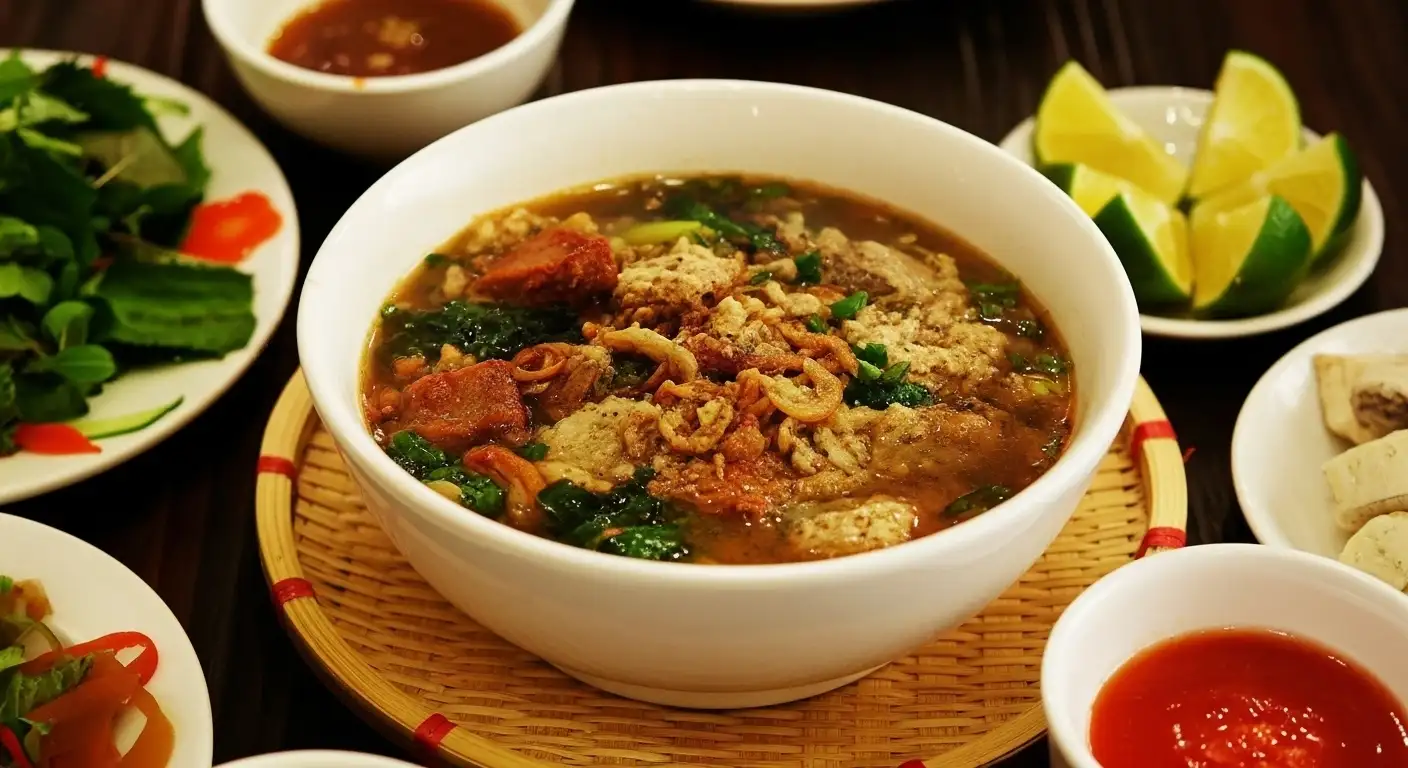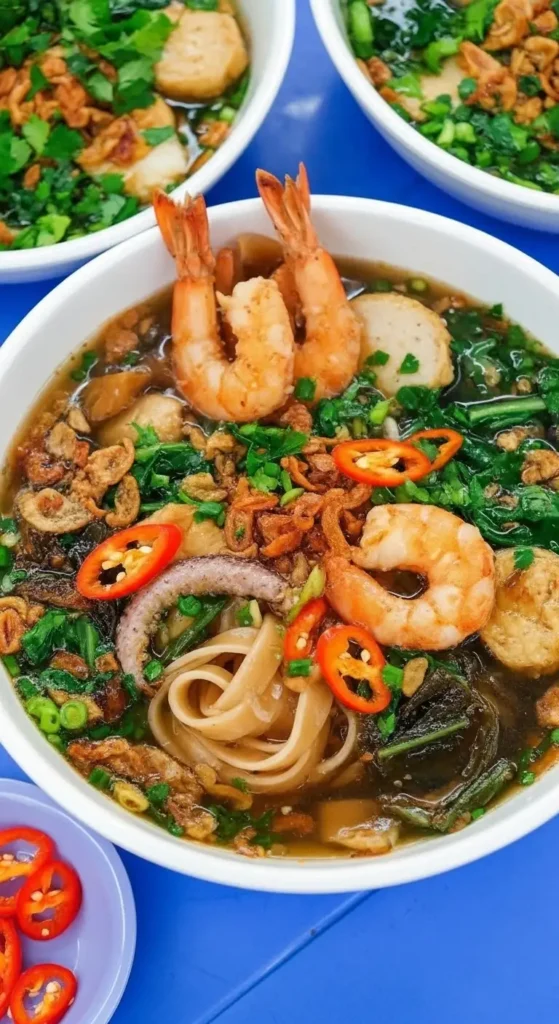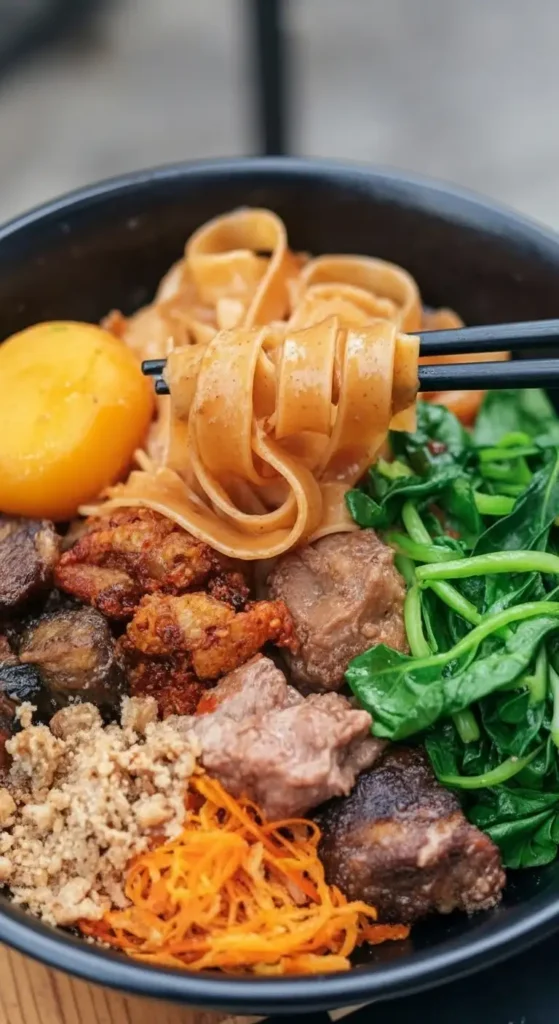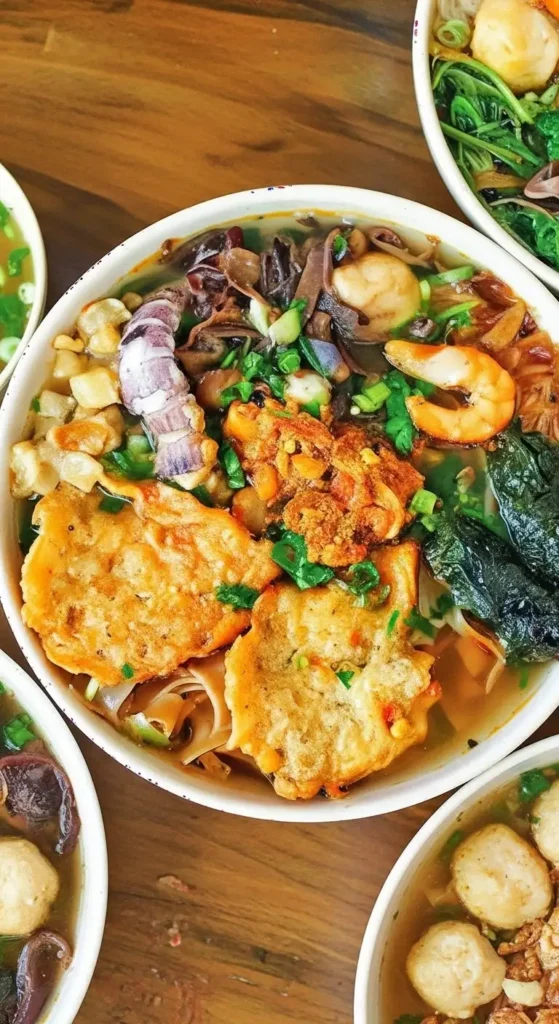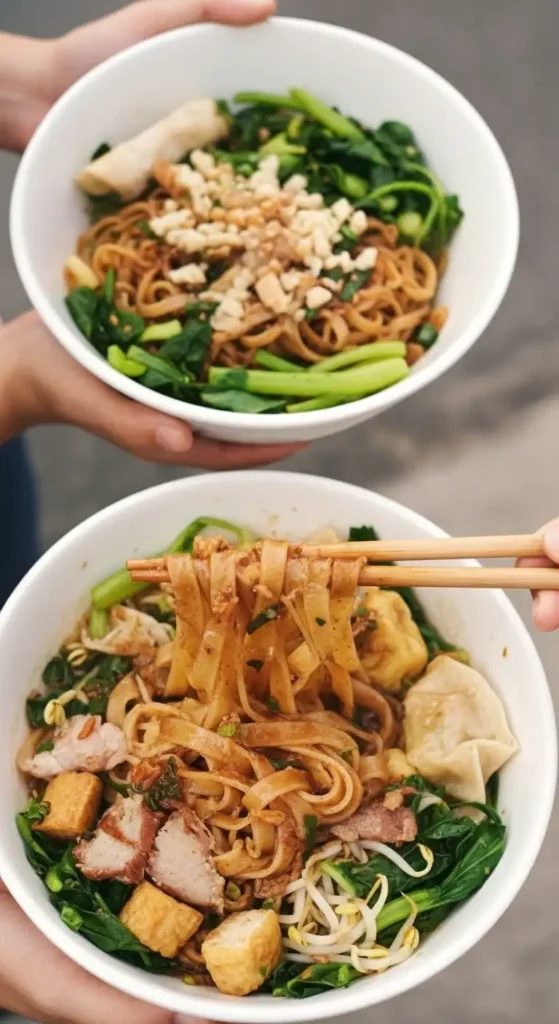Bánh Đa Cua (pronounced “Bahn Dah Koo-ah”) is a quintessential Vietnamese noodle dish that hails from the port city of Hai Phong in Northern Vietnam. It is a hearty, flavorful, and colorful soup whose distinct character comes from two main elements: its unique reddish-brown noodles and its robust, seafood-rich broth made from freshwater crab.

Bánh Đa Cua: The Basics
The Noodle (Bánh Đa): This is the dish’s signature feature. Unlike the thin white vermicelli (bún) or flat white rice noodles (phở), bánh đa are wide, flat rice noodles that are naturally or traditionally colored a deep reddish-brown (or sometimes dark gray) due to the use of a special type of rice and sometimes a touch of gấc fruit pigment or molasses during the drying process. These noodles have a chewier, heartier texture than most other Vietnamese rice noodles.
The Broth: The soup base is savory, rich, and slightly sweet, traditionally made by simmering freshwater crabs (cua đồng). The crab meat is pounded, strained, and cooked, resulting in fluffy, reddish-orange crab cakes (or riêu cua) that float on top. A bone broth base (chicken or pork) is often used to give the final soup more body and flavor.
The Toppings: A bowl of Bánh Đa Cua is a feast for the eyes, with vibrant colors from a variety of toppings:
Riêu Cua: The fluffy, reddish crab meat cakes.
Chả Lá Lốt: Fried minced pork or beef wrapped in aromatic betel leaves (lá lốt).
Chả Cá: Fried fish cake slices.
Pork Meatballs (Mọc): Sometimes added for extra substance.
Vegetables: A heap of fresh greens, typically water spinach (morning glory or rau muống), along with chopped scallions and cilantro.
Types and Styles of Bánh Đa Cua
While the core ingredients remain the same, Bánh Đa Cua is categorized primarily by the way it is served:
Bánh Đa Cua Nước (Soup Style):
This is the classic, most popular version, especially favored on cold or cool days.
The noodles, toppings, and fresh greens are submerged in the hot, savory crab broth.
Characteristics: The hot broth softens the noodles and blends the flavors of the different toppings.
Bánh Đa Cua Trộn (Mixed/Dry Style):
This style is popular in the heat of summer.
The noodles and toppings are served with very little or no broth, but instead tossed with a savory, concentrated dressing, sometimes with a little oil from the crab fat.
Characteristics: It has a much bolder flavor profile and emphasizes the chewy texture of the bánh đa noodles and the crunch of the vegetables. It often comes with a small bowl of hot broth on the side.
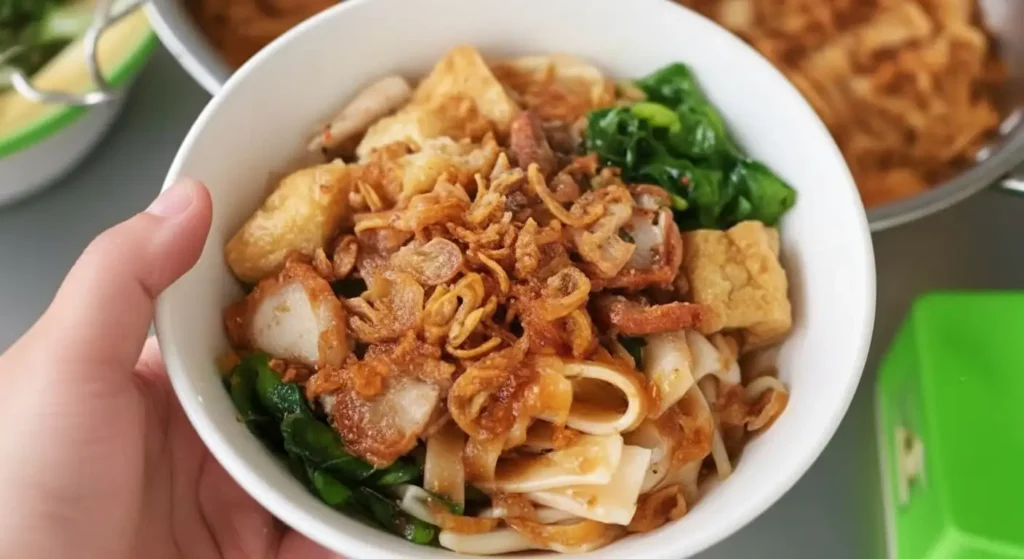
How to Eat Bánh Đa Cua
Bánh Đa Cua is a customizable and hearty dish, typically eaten as a full meal for lunch or dinner.
Add Condiments: Like most Vietnamese noodle soups, it is served with condiments on the side, including lime wedges, chili sauce (or fresh sliced chili), and frequently, a drizzle of rice vinegar.
Season to Taste: Squeeze fresh lime juice over the bowl to cut through the richness of the crab. Add chili for heat. In Hai Phong, vendors often provide a savory, bright red chili paste that adds both spice and color.
Mix and Slurp (Soup Style): Use your chopsticks and spoon to mix the ingredients slightly, ensuring the vegetables are coated in the broth. The wide, flat noodles require a hearty slurp!
Toss Thoroughly (Dry Style): If you order the Trộn version, make sure to toss all the ingredients thoroughly to coat the noodles and toppings with the dressing before eating.
Regional Differences
Bánh Đa Cua is fundamentally a Northern Vietnamese specialty, highly specific to Hai Phong and the Red River Delta area.
| Region | Regional Culinary Style | Bánh Đa Cua Interpretation | Local Perspective |
|---|---|---|---|
| Northern Vietnam (Hai Phong) | Savory, salty, and bold, often relying on the freshness of local seafood and distinctive regional noodles. | The Authentic Standard. The true Bánh Đa Cua experience requires the local reddish-brown bánh đa noodle and a generous amount of Chả Lá Lốt. The broth is robust and flavorful but not overly sweet. | It is the culinary pride of Hai Phong—a local dish that symbolizes the city’s sharp and bold character. |
| Northern Vietnam (Hanoi) | Delicate, refined, and subtle. | Popular Adaptation. Bánh Đa Cua is widely available in Hanoi but often as a representation of Hai Phong cuisine. Hanoi versions may sometimes use a slightly lighter, clearer broth and might not always feature the exact same local bánh đa noodle as the port city. | It is a well-loved regional specialty available alongside Hanoi's own favorites (Phở, Bún Thang). |
| Central & Southern Vietnam | Central: Spicy and savory. Southern: Sweet and generous. | Available, but Foreign. You can find restaurants serving "Bánh Đa Cua Hải Phòng" in major cities like Da Nang (Central) or Ho Chi Minh City (South), but the flavor is often adjusted to local tastes (e.g., a sweeter broth in the South) and the original, special red noodles may be hard to source or be substituted. | It is recognized as a specific, exotic Northern dish rather than a common local fare. |
